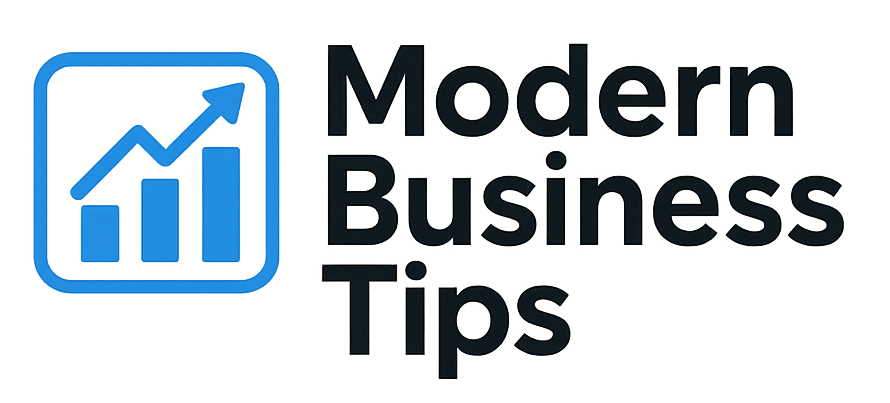Are you using a basic setup for your online store? Or do you want to improve your ecommerce strategy without spending money? Today, the right tools can make a huge difference. I found five amazing free ecommerce tools that boost your professionalism and make your work easier.
These tools help you compete well in a busy market. With them, you can make your online store better without spending a lot. They are key digital marketing solutions that can take your business to new levels.
Key Takeaways
- These tools cater to various aspects of ecommerce, from design to marketing.
- Leverage free ecommerce tools to maintain a competitive edge.
- Utilize online store software to achieve professional results easily.
- Efficiently manage your digital marketing campaigns with the right resources.
- Explore cost-effective solutions to improve your business performance.
What Are Ecommerce Tools and Why Use Them?
Ecommerce tools are software and apps that help manage online sales and marketing. They make running an online store easier and improve customer experience. By using these tools, I can make my store look more professional and handle tasks better.
Definition and Purpose
Ecommerce tools support online businesses. For example, an ecommerce website builder lets me create a website easily. These tools also help in marketing, leading to more sales.
Key Features to Look For
When picking ecommerce tools, look for key features. I focus on:
- Ease of Use: A tool should be easy to use for better efficiency.
- Integration Capabilities: It should work well with other systems for smooth workflow.
- Customer Support: Good support helps solve problems quickly.
- Scalability: The tool should grow with my business.
- Analytics : Detailed analytics help make better decisions.
These features are important for smooth operations. When I look for ecommerce tools, I keep these in mind. This helps me find the best tools for my business.
| Feature | Importance |
|---|---|
| Ease of Use | Facilitates navigation and productivity |
| Integration Capabilities | Ensures cohesive operations |
| Customer Support | Provides quick problem resolution |
| Scalability | Accommodates growth and evolving needs |
| Analytics | Informs data-driven strategies |
The Importance of Free Tools for Small Businesses
In today’s market, small businesses face many challenges, like tight budgets. Free ecommerce tools can help them find new ways to succeed without spending a lot. These tools are affordable, helping even the smallest businesses grow.
Cost-Effective Solutions
Free tools give access to important features found in paid software. This means I can use online sales software without monthly costs. It helps me improve my products, run my business smoothly, and talk to customers better without breaking the bank.
Increased Accessibility
Many free ecommerce tools have strong features, helping solopreneurs stand out online. I’ve seen how these platforms let anyone handle marketing and orders. This makes it easier for small businesses to compete with big ones, even with limited resources.
Tool 1: Canva for Stunning Product Graphics
Canva is a top pick for graphic design beginners. It offers a simple design process with a user-friendly interface. You can make eye-catching product images without needing to be a design expert.
Overview of Canva
Canva makes graphic design easy and fast. It has many templates for marketing, social media, and product images. It’s great for both newbies and design pros.
Features and Benefits
Canva’s drag-and-drop editor makes customizing easy. You get access to a huge library of images, icons, and fonts. It’s affordable, so small businesses can make high-quality graphics without spending a lot.
Tips for Designing Product Images
For the best product images, keep your brand look consistent. Use high-quality images and make sure product details are clear. Using contrasting colors makes your images stand out and grab attention.
Tool 2: Mailchimp for Effective Email Marketing
Mailchimp is a top choice for email marketing, great for small businesses. It offers many features to help you connect with your audience. Its easy-to-use design makes digital marketing easier, helping you send out targeted messages.
Overview of Mailchimp
Mailchimp is a strong email marketing tool with features like automated campaigns and audience segmentation. It’s designed for both new and experienced marketers. It has the tools you need to keep your customers engaged through email.
Setting Up Your First Campaign
Starting your first campaign on Mailchimp is simple. You can pick from many email templates that fit your brand. It also lets you segment your audience for better outreach. Plus, it tracks how well your campaigns do, so you can see what works.
Best Practices for Email Marketing
For email marketing success, focus on making it personal and keeping your audience engaged. Use clear calls-to-action to get more responses. Make sure your emails work well on mobiles, as many people shop online using their phones. Following these tips makes Mailchimp even more valuable for your marketing.
Tool 3: Google Analytics for Tracking Performance
Knowing how people behave on your website is key for any online store. Google Analytics is a top choice for ecommerce analytics. It gives you lots of data to improve your online business. You can learn about user engagement, where visitors come from, and who they are.
Overview of Google Analytics
Google Analytics is a free and powerful tool for tracking your online store’s performance. It lets you see how visitors interact with your site. You can track page views, session durations, and more. This helps improve user experience and boost sales.
Setting Up Tracking
Setting up Google Analytics is easy. First, create an account and get a unique tracking ID. Then, add this ID to your online store software. This starts collecting data right away. Make sure the tracking setup captures all the important metrics for detailed ecommerce analytics.
Analyzing Key Metrics
With Google Analytics up and running, you can start tracking performance. Look at:
- Traffic sources: see where visitors come from, like social media or search engines.
- Bounce rates: find out how many visitors leave after seeing just one page.
- Conversion rates: track how many visitors make a purchase or sign up for a newsletter.
By checking these metrics, you can make smart choices to improve your website. Adjust your content and marketing to get better engagement and sales.
Tool 4: Oberlo for Dropshipping Success
Oberlo is a key tool for those aiming to succeed in dropshipping. It connects users with many product suppliers, making it easy to run an online store. With Oberlo, you can manage your store’s products well and make your business operations smoother.
Overview of Oberlo
Oberlo is a top choice for dropshipping in the fast-paced ecommerce world. It lets entrepreneurs add products to their stores easily, without worrying about inventory. This makes it a must-have for building a strong dropshipping business.
How It Works
Setting up Oberlo with your ecommerce platform is easy. Just sign up and start looking through a wide range of products. Pick the ones that fit your niche and add them to your store with a click. When an order comes in, Oberlo takes care of shipping, so you can focus on selling and customer service.
Best Practices for Using Oberlo
To get the most out of Oberlo, follow some key practices. Choose high-quality products to keep customers happy and coming back. Use SEO-friendly descriptions to make your products easier to find. Also, offer top-notch customer service to stand out in the dropshipping and ecommerce world.
Tool 5: Shopify Lite for Building an Online Store
Shopify Lite is a cost-effective choice for entrepreneurs starting an online store. It’s a simple ecommerce website builder. It lets users sell products on social media and through embedded buttons on websites. This makes it great for small or growing businesses.
Overview of Shopify Lite
Shopify Lite is a budget-friendly version of the popular Shopify platform. It makes online sales easy. It’s perfect for new businesses or those wanting to boost their sales without a full ecommerce platform.
Setting Up Your Store
Starting with Shopify Lite is easy. You just need to create an account, add payment options, and set up your products. This lets businesses focus on their products while using Shopify’s strong features.
Users get to integrate payment gateways easily. They can also make the checkout process simple. This makes it easier for customers to buy from you.
Tips for Maximizing Sales
To get the most out of Shopify Lite, use social media for promotions. Share special deals to draw in customers and keep them coming back. A smooth checkout process also helps increase sales.
How to Choose the Right Ecommerce Tools for Your Business
Choosing the right ecommerce tools is key to boosting my online business. Knowing what I need helps a lot. I look at my budget, technical skills, and what features will help my business grow.
Evaluating Your Needs
First, I figure out what I really need. This includes knowing who my customers are, how many sales I expect, and the experience I want to give them. Making a list of essential features helps me pick tools that make my business run smoothly.
Researching Available Options
Doing lots of research helps me see what’s out there. I compare what each tool offers, including cost and reviews. Free trials let me test tools before buying. I look for tools that help with digital marketing to make my business more visible.
Integrating Ecommerce Tools for Optimal Performance
Using ecommerce tools well can make operations smoother, improve data analysis, and better serve customers. By linking different online business solutions, I make a workflow that works best. This teamwork relies on each tool talking well with others, like online store software.
Combining Tools for Efficiency
Choosing ecommerce tools that work together helps manage resources and time better. These tools handle everything from payments to inventory and customer service. This way, I make better decisions and run things more smoothly.
Retail technology keeps getting better, pushing for tools that connect easily. This connection lets data move freely, helping me make smarter choices.
Avoiding Common Pitfalls
But, it’s key to watch how these tools work together. If not, data might get stuck in silos, causing problems. Keeping up with updates and knowing about new features helps avoid these issues.
Tips to Enhance Your Ecommerce Experience
To do well in ecommerce, it’s key to keep learning and connect with others. The world of retail tech changes fast. So, it’s important to know about new ecommerce tools and strategies.
With many resources out there, exploring them can really help. It makes a big difference in how I manage my ecommerce site.
Continuous Learning
Going to webinars, reading blogs, and following experts are good ways to learn. They give me insights into the latest ecommerce tools. This helps me understand trends and strategies for my business.
Also, keeping up with new retail tech helps me stay ahead. It makes sure I’m competitive in the market.
Networking and Community Resources
Being part of ecommerce forums and connecting with other entrepreneurs is helpful. We share experiences and best practices. This boosts my knowledge.
Using community resources keeps me updated on new ecommerce tools. It also opens up chances for collaborations and partnerships.
Future Trends in Ecommerce Tools
The world of ecommerce tools is changing fast. We need better ways to work and serve our customers. New tools will use AI, automate marketing, and improve how we connect with customers. These changes can really help my online business grow.
Upcoming Innovations
New ecommerce tools will bring in cool tech like machine learning and predictive analytics. These tools will make things run smoother and give customers what they want. Marketing will get smarter, hitting the right people with the right message.
By keeping up with these new tools, my business can stay ahead. It’s all about being ready for what’s next in the market.
How to Stay Ahead
To keep up, I need to check out new ecommerce tools often. Going to conferences and workshops helps me learn about the latest trends. Talking to other pros keeps me in the loop about ecommerce and marketing.
By using the best tools for a great user experience, I’m ready for what customers will want next. This way, my business can keep growing and succeed for years to come.
Conclusion: Elevating Your Ecommerce Game without Breaking the Bank
Free ecommerce tools have helped me improve my online presence without spending a lot. I use Canva for graphics and Google Analytics for data. These tools help me stand out in a crowded market.
Keeping up with ecommerce trends and tools is key. The right tools make tasks easier and offer insights for growth. Choosing the right online store software keeps my strategies sharp.
Staying updated and adapting is essential in ecommerce. By trying new tools and listening to feedback, I can grow my online store. With free tools, I’m ready for success in the digital world.



